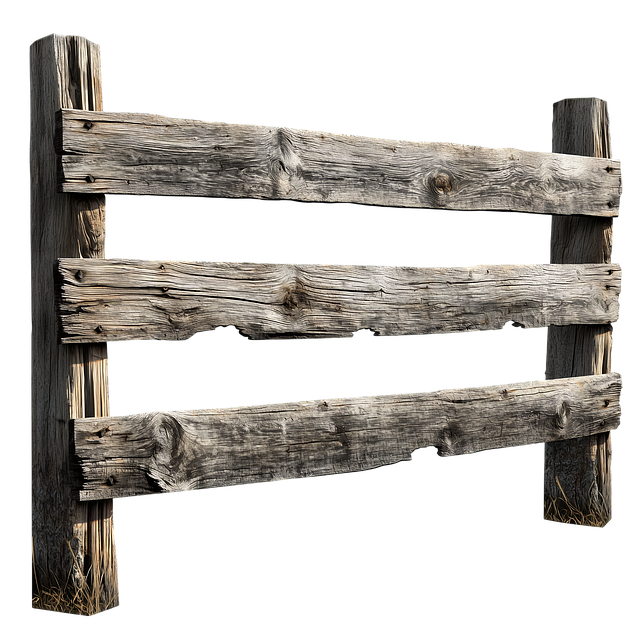Fence Staining and Sealing: A Comprehensive Guide to Revitalizing Your Wooden Fences
Maintaining your outdoor space starts with ensuring your wooden fences look their best. This comprehensive guide delves into the art of fence staining and sealing, offering insights that cater to both novices and seasoned DIY enthusiasts. We explore the multifaceted benefits of staining, from enhancing aesthetics to protecting wood, and guide you through choosing the perfect color palette. Learn the meticulous preparation process, efficient application techniques, and essential sealing practices to safeguard your fences for years to come.
- Understanding Fence Staining: Benefits and Types
- Preparing Your Wooden Fence for Staining
- Choosing the Right Stain: Color Options & Application
- Sealing for Protection: Why and How
- Maintenance Tips for Long-Lasting Results
Understanding Fence Staining: Benefits and Types
Fence staining is an essential process that not only enhances the aesthetic appeal of your wooden fence but also offers various functional advantages. By applying a coat of stain, you create a protective barrier against the elements, preventing rot, mold, and mildew from taking hold. This simple step can significantly extend the life of your fence, saving you money in the long run.
There are numerous types of fence stains available on the market, each with unique properties and benefits. Some stains offer superior durability and protection against UV rays, while others provide a wide range of color options to suit different preferences. Water-based stains, for instance, are eco-friendly and easy to clean, while oil-based stains tend to be more long-lasting and resistant to fading. Understanding these variations can help you choose the best option for your specific needs and ensure a beautiful, well-protected fence.
Preparing Your Wooden Fence for Staining
Before applying any stain or sealer, proper preparation is key to achieving a long-lasting and visually appealing finish. Start by inspecting your wooden fence for any signs of damage, such as rot, cracks, or loose boards. Repair or replace these issues to ensure the integrity of the fence. Next, clean the fence thoroughly. Remove any dirt, dust, mildew, or mold using a pressure washer or a stiff brush. This step is crucial as it ensures that the stain adheres well and doesn’t get washed away.
Once cleaned, sand the fence surface gently to create a rough texture. This process helps the stain penetrate deeper into the wood fibers, enhancing its durability. Make sure to use the appropriate grit sandpaper for the best results. Finally, sweep off any leftover dust and give the fence a final rinse with water to ensure it’s dry before staining.
Choosing the Right Stain: Color Options & Application
When choosing a fence stain, color is a crucial factor. Different stains offer various color ranges, from natural wood tones to vibrant hues. It’s essential to consider your fence’s existing color and the desired ambiance. For instance, lighter stains can enhance the grain and give a fresh look, while darker shades create a more dramatic effect. Some stains even provide custom-mixable colors for exact matches.
Application also plays a significant role in selecting the right stain. Water-based stains are popular due to their low odor and ease of cleanup. They’re suitable for smaller projects or areas with minimal traffic. Oil-based stains, on the other hand, offer better protection against UV rays and harsh weather conditions but may require more preparation and a longer drying time. Always follow the manufacturer’s instructions for best results, considering factors like surface preparation, brush selection, and number of coats needed.
Sealing for Protection: Why and How
Sealing is an essential step in fence maintenance, offering protection against the elements and prolonging the lifespan of your wooden fence. Wood is susceptible to damage from sunlight, moisture, and extreme temperatures, which can cause fading, cracking, and eventual deterioration. Sealing creates a protective barrier, preventing these harmful factors from penetrating the wood’s surface.
The process involves applying a sealant, typically in liquid form, that fills in pores and cracks, sealing them shut. This prevents water absorption, which is crucial as moisture can lead to rot and insect infestation. A good-quality sealant will also reflect sunlight, reducing heat absorption and minimizing the impact of UV rays, thus preserving the fence’s color and structure over time.
Maintenance Tips for Long-Lasting Results
Regular maintenance is key to ensuring your fence staining and sealing job lasts for years to come. Start by cleaning the fence regularly, removing any dirt, dust, or debris that could affect the paint’s integrity. Use a soft-bristled brush and mild detergent, then rinse thoroughly with water.
Inspect the fence at least once a month for any signs of damage, such as cracks, chips, or peeling. Repair these issues promptly using high-quality repair kits designed for wood. After repairs, apply a fresh coat of sealer to protect the fence from the elements and extend its lifespan.
